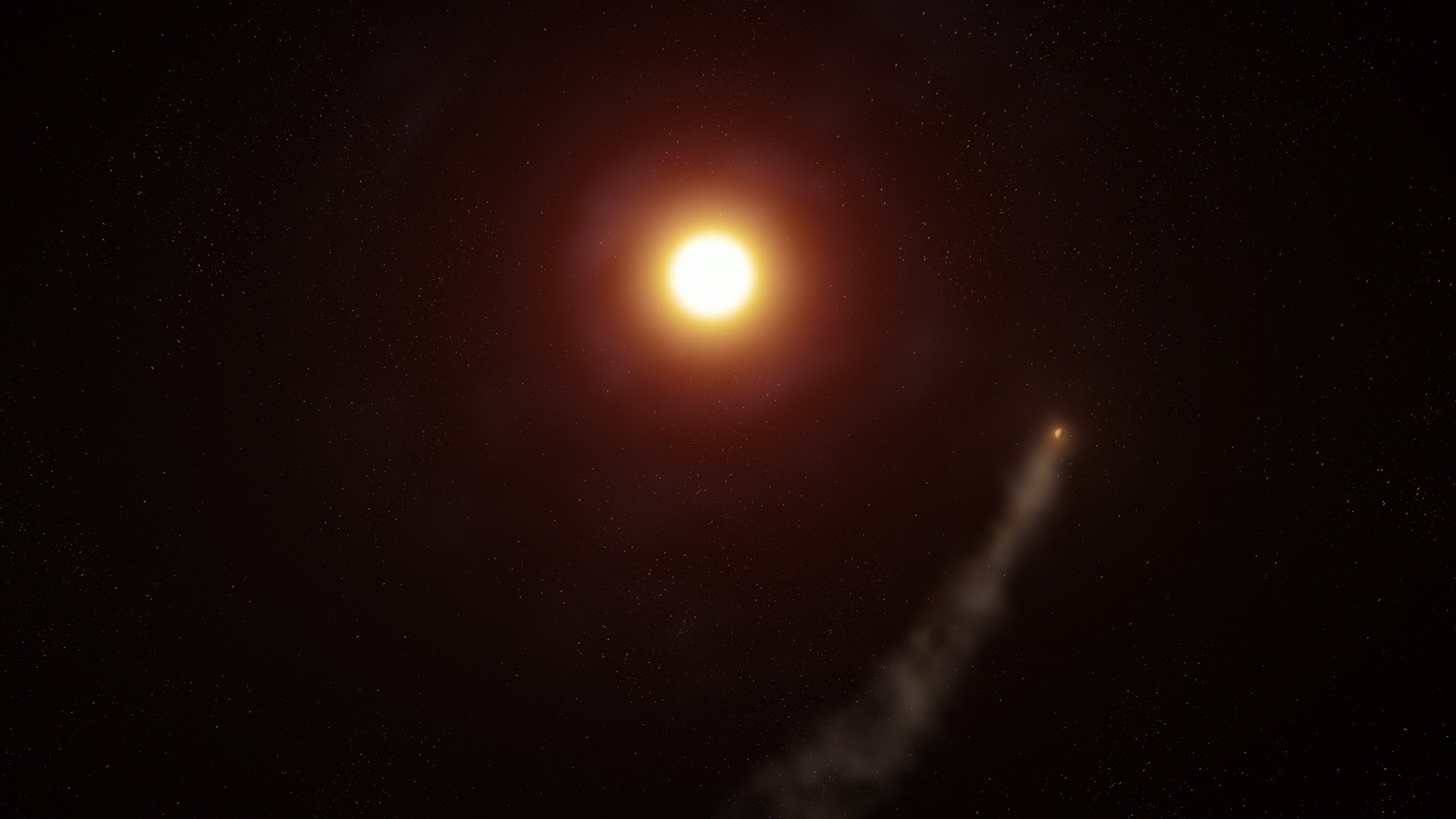My research
Transmission Spectroscopy
How can we study the atmospheres of exoplanets located light-years away? The answer is 'yes,' thanks to the transit detection method. As an exoplanet crosses its host star's disk from our perspective, it causes a slight dip in starlight. While this tells us about the planet's size, it can also offer insights into its atmosphere. When starlight passes through a planet's gaseous envelop, certain wavelengths get absorbed, leaving 'missing' photons on our detectors. This is what we call transmission spectroscopy.
It's through this method that we can analyze what gases comprise an exoplanet's atmosphere. One day, this technique might even reveal signs of life on distant worlds through specific biosignatures.
Direct mass-loss
My work extends the power of transmission spectroscopy beyond just identifying atmospheric components. My first lead-author publication (which you can read here) dives into the chaotic world of the hot Jupiter, WASP-69b. Utilizing this method, we've detected a 'puffy' envelope of helium around the planet, being blown away by the host star at speeds of 15,000 miles per hour!
Even more interesting - This helium forms a comet-like tail stretching over 400,000 miles. You can see this in the to-scale model and artist interpretation on the left. Using these observations, we have estimated the planet loses an Earth's mass of atmosphere every billion years! It's amazing to think that all this can be inferred just by studying light — the transmission spectrum of a transiting exoplanet, to be exact.
In hot-Jupiters like WASP-69b, mass loss can be directly observed thanks to their enormous atmospheres. Smaller planets are not as forgiving; they can't afford to lose so much mass. This ties back to the 'Radius Gap': it's not that planets between 1.3—2.0 Earth radii can't exist, but they likely don't last long, their atmospheres eroding too quickly. We may not catch this in action but can study it indirectly. My work utilizes radial velocity measurements to detect the 'wobble' in stars caused by orbiting super-Earths and sub-Neptunes, allowing us to determine their masses.
By leveraging emerging tech and techniques, we're starting to pinpoint these smaller worlds' masses, filling a critical knowledge gap. This opens up exciting questions: Are these planets just stripped-down rocky cores, or do they hide a different formation history?




